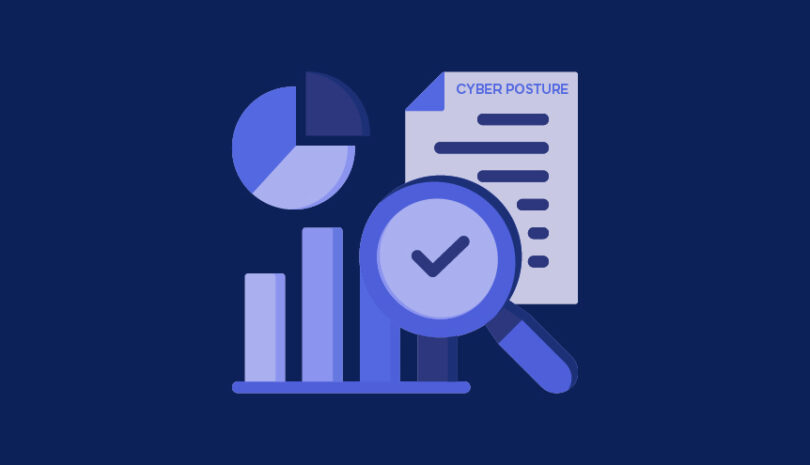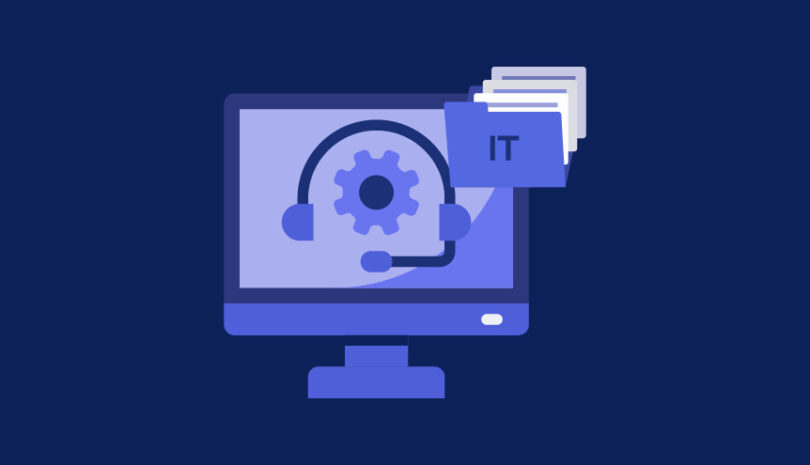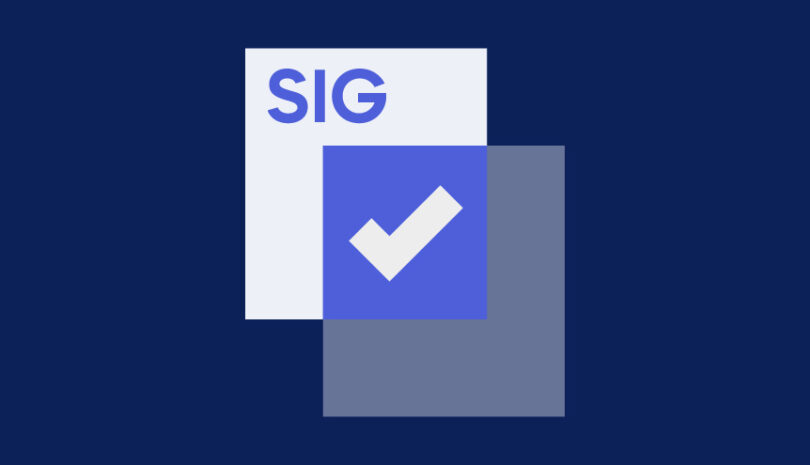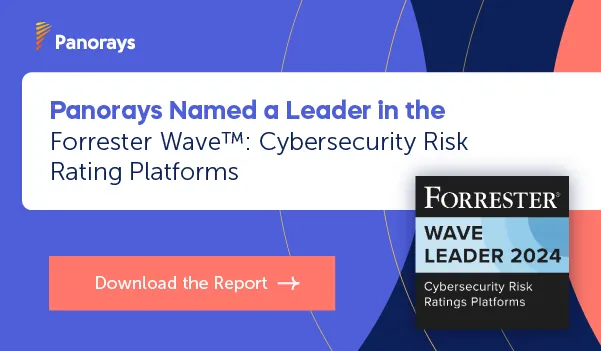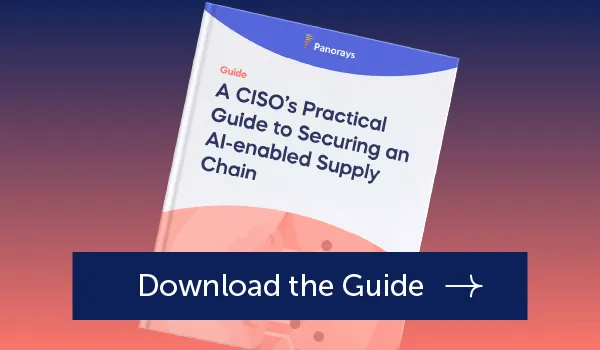According to the EY 2023 Global Third-Party Risk Management Survey, 63% of organizations plan to integrate third parties and automation to better manage risk assessments in the near future. Although almost half (43%) have strategies in place to deal with high-risk vendors before incorporating them into their digital supply chain, more than half do not have a strategy in place at all. Since our reliance on third parties will only increase in the future, organizations must consider different strategies to help defend against risk from these third parties.
One of the most important tools available for them to proactively manage risk is through an automated risk assessment.
What is an Automated Risk Assessment in Third-Party Risk Management?
An automated risk assessment streamlines and automates the manual processes involved in identifying, evaluating, remediating and continuously monitoring third-party risks. This aspect of cyber security automation is often done with the use of artificial intelligence (AI) to reduce costs and minimize errors associated with manual tasks. The need to automate risk assessments has increased as organizations increasingly rely on third parties for a wide range of services of varying levels of criticality and need to quickly and continuously evaluate the risks they pose to an organization. Various types of workflow automation exist, typically as an additional feature of an organization’s existing third-party risk management solution. Automated workflows, automated risk assessments and a TPRM solution all work together to automate cybersecurity in third-party risk management.
7 Key Steps to Cybersecurity Automation in TPRM
The expansion of regulations, the rise of reliance on third parties and the continuing evolution of cybersecurity threats make it critical for organizations to customize and tailor third party risk management for each supplier that they onboard. As security risks increase, it is becoming increasingly challenging to defend against them. At the same time, failure to identify threats in time can lead to cyberattacks, data breaches, regulatory fines, reputational damage and a loss in customer trust.
How can organizations scale the process of evaluating new vendors for third-party risks? The answer lies in third-party security automation, which can be broken down into seven different steps.
Step 1: Identify and map vendors according to inherent risk.
First, you’ll want to conduct an inventory of the vendors in your digital ecosystem. This includes understanding the service they offer, the type of data your organization shares with it and the level of criticality of each supplier. Each vendor’s critical assets should be assessed at three different layers: network, IT, application and the physical layer. After this, you’ll need to understand the controls the vendor has in place versus the inherent risk they pose to your organization and the business impact of that risk. Would an attack or security incident from a particular vendor disrupt or halt your operations entirely or expose your customer’s sensitive data?
Advanced third-party security automation tools can quickly calculate inherent risk according to a variety of factors such as the vendor’s level of criticality, the sensitivity of the data shared with the vendor and its access to that data.
Step 2: Evaluate internal controls according to your risk appetite.
Second, you’ll need to set your internal controls, which can range from access controls and data encryption to HR cybersecurity awareness programs. These controls should be set according to how much and which type of risk your company can handle. You’ll also need to evaluate the different regulatory compliance requirements your vendor must adhere to, depending on their industry, location and the type of data they generate, process or transfer. For example, is your organization’s payment provider adhering to relevant regulations such as PCI DSS by encrypting cardholder data both at rest and in transit and conducting regular penetration tests on its networks?
Advanced third-party security automation tools can use the internal evaluation, combined with your organization’s risk appetite, to generate relevant and contextual cybersecurity questionnaires for each vendor.
Step 3: Send cybersecurity questionnaires to your vendors.
Once you’ve successfully created a cybersecurity questionnaire, either manually or automatically, you’ll need to send it to your vendor to have your vendor answer the questions and understand where any cybersecurity gaps lie. Typically, the manual process of completing cybersecurity questionnaires requires a fair amount of collaboration from different vendor stakeholders and back-and-forth for clarifications, lasting weeks or even months. These delays can strain vendor relationships, postpone important projects and affect business productivity while also posing security risks in the meantime.
Advanced third-party security automation tools, however, enable you to track communications between you and the vendor, accelerating response to drastically reduce the time it takes to complete a cybersecurity questionnaire.
Step 4: Assess your vendor’s attack surface.
Although you’ve previously identified your vendor’s critical assets in step one, you’ll now need to assess the level of risk posed by those assets. Gathering this information is essential to completing the answers in the cybersecurity questionnaire.
The three layers of attack surface analysis include:
- IT and network. Parameters involving DNS servers, SSL-related protocols, etc.
- Applications. Parameters involving web applications, domain hijacking, etc.
- Human. Parameters involving social posture and the presence of a dedicated security team, etc.
Advanced third-party security automation tools accelerate this process with the use of AI models that are trained on large data sets of hundreds of millions of continually assessed assets, enabling greater levels of accuracy as well.
Step 5: Evaluate risk levels according to the level of criticality.
Once you’ve gathered the answers from the cybersecurity questionnaire and established your risk appetite, you’ll be able to correlate the answers with the levels of internal controls you’ve put in place. Rank each response according to the level of risk, the questionnaire response and the criticality of the business relationship. Advanced third-party security automation tools identify any cyber gaps in your vendor’s security posture automatically by quickly identifying any problematic answers to important questions.
Step 6: Create a remediation plan.
After you’ve identified the current cyber gaps in your vendor’s security, you’ll need to document it to share it with your vendor so that you can collaborate to remediate the issues. Documenting also makes it easier to track the issues about the security controls and work towards quicker resolutions in the future. Advanced third-party security automation tools create a step-by-step remediation plan for you to execute together with your vendor.
Step 7: Continuously monitor.
Finally, after remediation is executed you’ll need to follow up to ensure that it was successful, or if additional issues need to be resolved. Depending on the results of the review, your organization may decide to discontinue with the vendor or accept the vendor on the condition that the remediation be completed by a certain date. Continuous monitoring is crucial in the evolving cybersecurity landscape of threats and increasing dependence on third-party vendors. Advanced third-party security automation tools make continuous monitoring much easier and include alerts about any vendor security changes or data breaches that might affect your organization.
The Importance of Automated Risk Assessment in TPRM
Manual processes of evaluating third-party risks are difficult to scale, consume precious time and resources, and are prone to error. These review processes can easily become backlogged, overwhelming and frustrating your security and third-party risk teams and increasing the risk of a data breach or cyberattack on your organization. As a result, many organizations rely on automated risk assessments to continuously assess third-party risk, which offers many advantages over manual processes.
The advantages include:
- Eliminating manual processes. Automated risk assessments streamline the manual process for more accuracy and efficiency, extracting data from different sources, such as relevant vendor documents, your organization’s internal controls, third-party controls and the various external regulators with which it must comply. This in turn saves time and resources and allows for vendors to be verified and onboarded more quickly.
- Accelerating the process for approval or rejecting vendors. Organizations rely on third-party vendors for essential elements of their business operations, it is important to be able to start working with them as soon as possible. Automated risk assessments enable you to quickly identify which vendors align with your internal security policy and which should complete a remediation plan before onboarding.
- Fostering greater collaboration between departments. Since automated risk assessments are usually part of a third-party risk solution, the centralized data can be shared using a dashboard to deliver greater visibility to different stakeholders. Sending alerts to specific shareholders based on exact qualifications ensures that tasks not only aren’t duplicated, but that nothing falls through the cracks. For example, you may only send alerts to IT managers when a completed cybersecurity questionnaire needs to be reviewed.
- Ensuring continuous monitoring and evaluation of third parties. Not only do organizations increasingly rely on third parties, but market competition, dynamic IT infrastructure and evolving technologies mean that organizations are continuously adding new third parties and even replacing them with newer technologies or different suppliers. Automating the process for evaluating third-party risk accelerates the process of approving these third party services to ensure they don’t get backed up.
How Panorays Manages Your Third-Party Risk
With increasing reliance on the integration of hundreds and even thousands of third parties into your IT infrastructure for a wide variety of essential services, cybersecurity automation is the key to quick and accurate third-party risk management. By combining automated, contextualized cybersecurity questionnaires with external attack surface assessment to deliver cyber ratings for your suppliers, Panorays gives you an accurate view of your supplier risk.
It accelerates this process through the use of AI in both generating and completing these cybersecurity assessments and in its performance of external attack surface assessments. On the supplier’s side, it uses AI to generate questions based on past similar questionnaires. On the evaluator’s end, it uses AI-assisted questionnaire responses based on credible vendor documents.
In addition, Panorays streamlines the third-party evaluation process by automating workflows so that you can approve or reject third parties, generate remediation tasks and assign tasks to stakeholders throughout the approval journey. You can automate the supplier approval process based on different thresholds set by your company’s internal security policy according to the questionnaire rating, cyber posture rating, risk rating, status and business impact.
Want to learn more about how Panorays can manage your third-party risk and how you can streamline the process through automated workflows? Get a demo today.
FAQs
Automated risk assessments in third-party risk management identify, evaluate, continuously monitor and remediate risks that are a result of integrating third parties into an organization’s IT infrastructure. Organizations often rely on the use of artificial intelligence (AI) to automate these traditionally manual processes to ensure better accuracy and efficiency. The ability to automate workflows is generally an additional feature in an organization’s third-party risk management solution.
Automated risk assessments are important in third-party risk management because they help to reduce error, increase efficiency and save costs involved in the traditionally manual process of identifying, evaluating, continuously monitoring and remediating third-party risk. Without automating these workflows, security teams and organizations can become overwhelmed and frustrated by the number of third-party risks, consuming time and resources while at the same time leading to errors.
The seven key steps to cybersecurity automation in third-party risk management are:
1. Identify and map vendors according to inherent risk. Conduct a vendor inventory that includes understanding the service they offer, the type of data they are exposed to and the level of criticality of each supplier.
2. Evaluate internal controls according to your risk appetite. Correlate the answers with the levels of internal controls you’ve put in place. Rank each response according to the level of risk, the questionnaire response and the criticality of the business relationship.
3. Send cybersecurity questionnaires to your vendors. You need to have your vendor answer the questions to understand where any cybersecurity gaps lie.
4. Assess your vendor’s attack surface. Assess the level of risk posed by your vendor’s assets.This should be done according to at least three layers: IT, application and human.
5. Evaluate risk levels according to the level of criticality. Correlate the answers with the levels of internal controls you’ve put in place. Rank each response according to the level of risk, the questionnaire response and the criticality of the business relationship.
6. Create a remediation plan. Document any cyber gaps you’ve found to share it with your vendor so that you can collaborate to remediate the issues as quickly as possible.
7. Continuously monitor. Ensure that vendor remediation was successful or if additional issues need to be resolved. Based on the results of the evaluation of the remediation you may determine it is worthwhile to end a vendor relationship or establish a deadline for future remediation plans.

